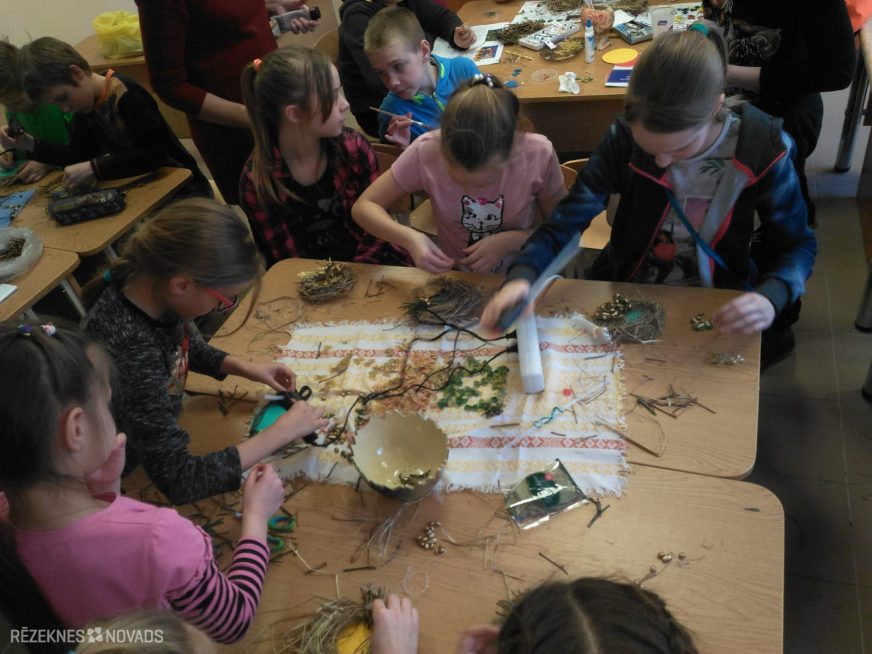Camp “long bean” in Tiskados

For the second time, the project “Support for the Development of Individual Competencies of Students” was held for the second time in Classes 1-6 of the Natural Sciences camp. The camp activities and studies took place in both the school premises and the places of departure.
Every morning of the day began with a morning show where the pupils woke up and prepared for the day. On the first day of the camp, after the morning and breakfast, the pupils went out into an excursion on a bread museum in Aglona. She knew a lot of young about bread. The pupils were given the knowledge of the bread and the process of making it, the sowing, harvesting and threshing of grain. During the narration, the Latvian people's proverbs, parks, sentences and songs were used. The grain process was divided into men's work and women's work. The students simulated the stages of the process, engaged in a familiar narrative of grain recognition and savoring, tried their ability to work with tools used by our parents and grandparents. The pupils followed the bread from the grain to the rye bribe, which they formed with Latvian signs and baked each other.
When they returned to school, pupils drew their rye bread, bakery, grain, and made a poem, a story, or a narrative of what they had seen.
On the second day, the pupils had theoretical research activities: the history of bread. During the presentation, pupils enriched their newly acquired knowledge of the variety of cereal species. Learning to recognize cereals by seed, external design and appearance. In practical research, students are familiar with research methods. In the course of the bread study, the pupils determined the taste, the smell, the protein, carbohydrate, fat, pH environment and the labels. At the end of the day, the pupils prepared a healthy knife without sugar in the practice session, using conventional substances – flour, eggs, butter, spices, linseed, dried cranberries, dates and various nuts.
The third day also studied food products used in daily food - bananas, yoghurt, cotletes, sausage etc. They were classified by nutrients. A study involving protein or carbohydrate was carried out. In the practice session, “fun-orientation” pupils, using part of the map, searched for the other parts of the map, which had a variety of fun tasks - about the newly acquired knowledge in the form of crossword pastry with images that helped determine the location of the next station. When the last task was done, the pupils had a beautiful rye field.
In the concluding lesson, in the creative workshop, the pupils formed a beautiful decorator. Creative workshops were executed individually. Students had the opportunity to exercise free self-expression in the performance of their works. Developed skills to work with natural materials, paper, various food products and colours. The pupils formed spatial jobs – the closest festival – Easter.
Every day, sports activities, Jautri relay and movement plays were held among the activities to promote healthy and physically active life.
Camp manager Renata Sticane



